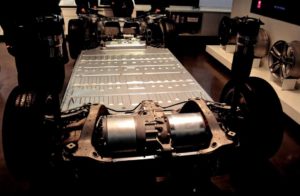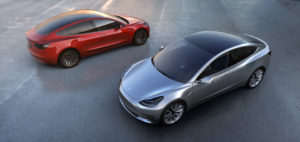It is no secret that speculation in the mineral exploration is currently being driven by optimistic forecasts about the market penetration of electric vehicles and the future impact on demand for lithium ion batteries. That, in turn, is driving investor interest key battery ingredients, including lithium, cobalt and nickel.
But in a new report, BMO Capital Markets says battery costs may not come down as fast as many analysts have predicted. As a result, it says that although it is difficult to accurately predict the pace of transition from fossil fuel-powered ICEs (internal combustion engines) to EVs (electric vehicles), BMO believes its best case estimate of a 10% penetration rate by 2025 (a 30% compounded annual growth rate) is reasonable.
It is a view that is based on the challenges associated with advancing lithium battery chemistry in order to achieve cost parity with the internal combustion engine and increase the energy necessary to reduce consumer range anxiety.
BMO believes these challenges are not well understood by the market.
“Based on our detailed work on battery chemistry, we believe the consensus view that the next generation of lithium ion battery formulation NMC811 (8 parts nickel, 1 part manganese, 1 part cobalt) is readily achievable is optimistic,’’ the investment firm said.
“We believe it will be more technically challenging to develop, which impacts some of the more optimistic lithium ion powered EV adoption forecasts,” it warned.
BMO’s definition of electric vehicles includes BEVs (battery electric vehicle) and PHEVs (plug-in hybrids).
Its forecasts do not include straight hybrids (HEVs) such as Toyota Prius of Kia’s Niro.
This is because HEVs do not use lithium-ion battery technology at this time.
The growth of the global electric vehicle market is led by China
With progressive subsidies, penetration targets, investment, and the number of manufacturers, China has been leading the charge. Tesla Inc. might have the highest brand recognition, but Chinese manufacturers BYD (8.25%-owned by Berkshire Hathaway Inc. is the world’s largest EV company and battery manufacturer.
China’s lead can be attributed mainly to the following factors:
- China has 40% of the world’s EV car stock and 30% of global sales.
- Over 600,000 units (BEVs, PHEVs and straight hybrids) were sold in 2017, up 71% from 2016.
Lithium Price
BMO says it expects lithium prices to rise further over the next year before falling back slightly as the current supply shortfalls abate.
The investment firm said it expects the blended realized lithium carbonate/hydroxide price to rise slightly from the current $13,000 to $14,000 per tonne for large volumes (with hydroxide trading at premiums to carbonate) before falling in 2019-2021 an stabilizing at $10,000 per tonne in 2021.
Cobalt price
BMO says a doubling of the cobalt spot price over the coming years is not out of the question.
Around 55% of cobalt is already going into rechargeable batteries, compared to lithium’s 40% and nickel’s 5%, which has resulted in an industry-leading trend demand growth of 6.1% (compounded annual growth rate) since 2010.
Cobalt demand has grown from 40,000 tonnes in 2000 to exceed 100,000 tonnes for the first time in our estimates this year.
However, BMO says it expects car companies to lean on battery makers to spend more R&D dollars to accelerate reductions in cobalt content or replace it altogether. This is partly due to the fact that 60% of the world’s cobalt supply is mined in the Democratic Republic of Congo.
“No purchasing manager wants to be so reliant on supply of a critical raw material from a single supply source, particularly one [like DRC] with a poor human rights track record and the threat of political instability,” BMO said.
However, the investment firm concedes that this may be difficult to achieve, as cobalt is produced as a by-product of nickel and copper, and there are no new cobalt projects that could come to market in the short term.
Outlook for Nickel
BMO says it expects nickel to underperform base metal peers again in 2018.
“The resurgence of nickel pig iron output, based on increased volume of Indonesian ore, marks a major deflationary element in the market,” BMO says.
However, it is more bullish on the long term outlook. Batteries will lead the way and EV cathode chemistry must and will shift to higher nickel content over time, BMO says
Nickel prices have always cycled around with stainless steel trends. Partly owning to the nature of the surcharge mechanisms, stainless producers rush to buy nickel when demand is good and prices rising, and vice versa.
However, looking past the cycles, the longer-term trend for global stainless output growth is +5%.


